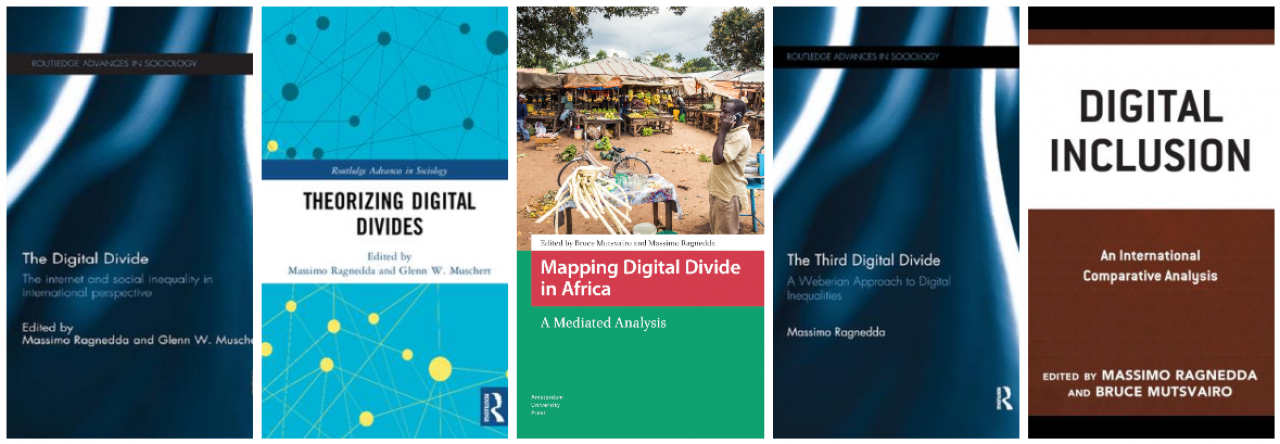 In this blog written for the Real Impact blog @massimoragnedda and @marialauraruiu discuss the inequalities in accessing and using technology
In this blog written for the Real Impact blog @massimoragnedda and @marialauraruiu discuss the inequalities in accessing and using technology
The rise of Information Communication Technologies (ICTs) was seen at the beginning as an opportunity for freedom of information, and to level up existing inequalities (Rheingold, 1993; Negroponte, 1995). However, scholars realized soon that access to ICTs would give an advantage to specific citizens/users (Resnick, 1998; Hargittai, 2000). The term “digital divide” emerged to describe inequalities in access to the technologies of the information society. At the early stage of research on the digital divide, access to the Internet and ownership of ICTs was seen both by scholars and by policy makers as the most crucial factor. The possibilities for an individual to access and use the Internet are at the base of the first level of digital divide.
Moving beyond access….
Nevertheless, access to the Internet alone cannot determine how much value users gain from the Internet and, therefore, this dichotomy of “haves” and “have nots” is ineffective to describe a phenomenon that is no longer based only on the possession of technology or simple access to it. After the fading of the initial euphoria surrounding the rise of ICTs, it become clear that users with more information skills, more resources, and more social and economic capital would gain greater advantages than others. These digital inequalities opened up new dimensions of social segmentation, interwoven with traditional cultural and social inequalities and potentially reinforcing them. Digital divide started to be seen as a phenomenon relating to complex issues that involve all aspects of community life, in economic, political, cultural and social arenas.
We have moved from the first level of digital divide (mainly based on access to the Internet) to a more sophisticated and multidimensional second level (based on the disparities in computer and Internet use). Skills, competence and abilities to use the Internet have become more important than even. Not only the material access to the Internet is taken into consideration, but also the different uses of it. Recently a new approach defined as the third level of digital divide emerged (Ragnedda 2017). It focuses on the social and cultural benefits deriving from accessing and using the Internet. It analyses the offline returns of accessing and using digital technologies, attempting to understand who gains the most advantage from the Internet (van Deursen and Helsper 2015).
How do we close the divide?
Accessing and properly using ICTs constitutes a new civic right. Narrowing the uneven distribution in the access to, use of, or impact of ICTs between individuals, must be ranked as one of the top human rights priority. The possibilities that the Internet offers to citizens in economic, political, social and cultural areas are not exploited by everybody in the same way. The Internet influences possibilities for citizens to improve their life chances, but in a vicious circle, based on their original social position. In other terms, social strata that already enjoy social advantages become further privileged by using the Internet.
The different uses we make of the Internet lead to completely different roles of the network in people’s lives. Socio-economic and cultural backgrounds affect the access to and the use of the Internet (first and second level) and that this online experience influences people’s life chances and the opportunities they have in the offline world (third level). Digital inequalities, therefore, tend not only to reinforce social inequalities already existing in the offline society, but also to enlarge the gap between the less advantaged and the most advantaged individuals. Social strata that in the social realm tend to obtain more valuable resources are the same that tend to exploit ICTs most advantageously.
Massimo Ragnedda and Maria Laura Ruiu examine how digital capital can be defined, measured and impact policy in their recently published book Digital Capital: A Bourdieusian Perspective on the Digital Divide. Find out more here.
 Ragnedda, M. (2019). Reconceptualising the digital divide. In Mutsvairo, B., and Ragnedda, M., (2019) (eds)., Mapping the Digital Divide in Africa. A mediated Analysis. Amsterdam: Amsterdam University Press, pp. 27-43.
Ragnedda, M. (2019). Reconceptualising the digital divide. In Mutsvairo, B., and Ragnedda, M., (2019) (eds)., Mapping the Digital Divide in Africa. A mediated Analysis. Amsterdam: Amsterdam University Press, pp. 27-43.
 In this blog written for the
In this blog written for the  Author Accepted Manuscript (AAM)
Author Accepted Manuscript (AAM)  Gladkova, A., Vartanova, E., Ragnedda, M. (2020),
Gladkova, A., Vartanova, E., Ragnedda, M. (2020),  Massimo Ragnedda (2018), Reducing and Preventing Digital Discrimination: Digital Inclusion Strategies in Europe, In Ragnedda, M., and Mutsvairo, B. (eds)
Massimo Ragnedda (2018), Reducing and Preventing Digital Discrimination: Digital Inclusion Strategies in Europe, In Ragnedda, M., and Mutsvairo, B. (eds)  Massimo Ragnedda and Maria Laura Ruiu (2020),
Massimo Ragnedda and Maria Laura Ruiu (2020),  Mutsvairo, B. & Ragnedda, M. (2019)
Mutsvairo, B. & Ragnedda, M. (2019) I am really glad and happy to be Visiting Scholar at the
I am really glad and happy to be Visiting Scholar at the  The 28th of October 2019, I acted as external examiner for a Ph.D. dissertation at the
The 28th of October 2019, I acted as external examiner for a Ph.D. dissertation at the  In my Kenyote talk at the 11th edition of the
In my Kenyote talk at the 11th edition of the